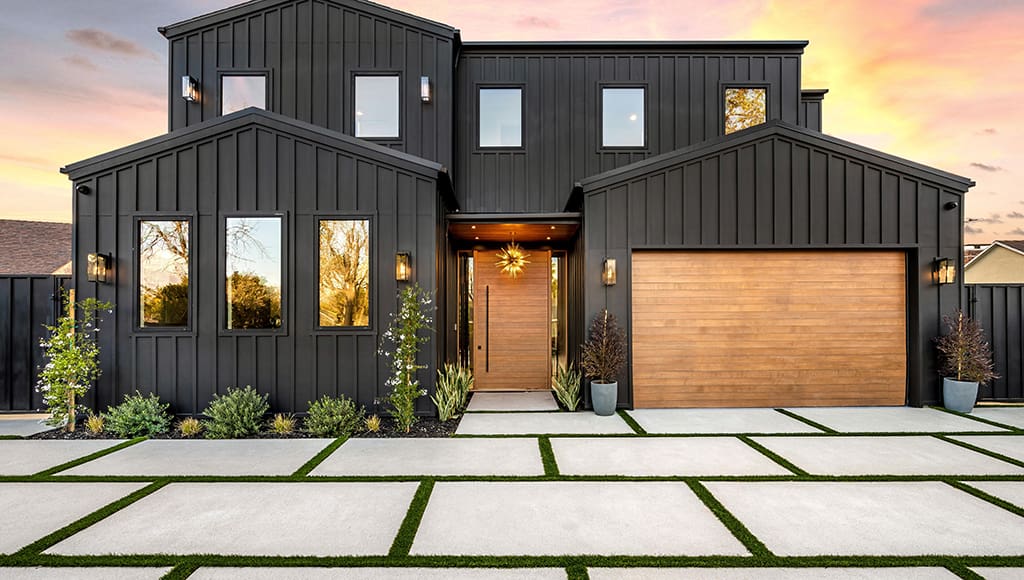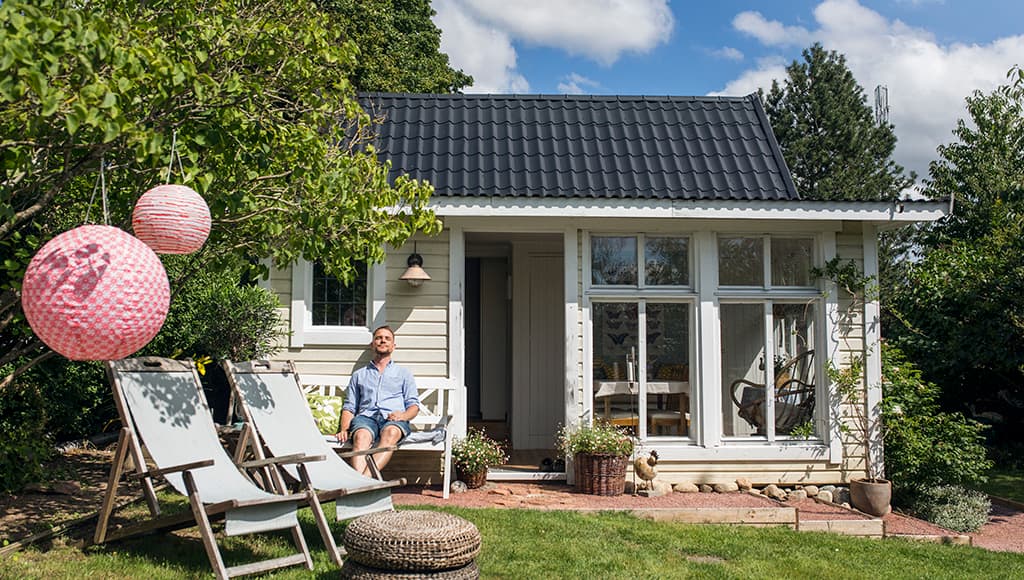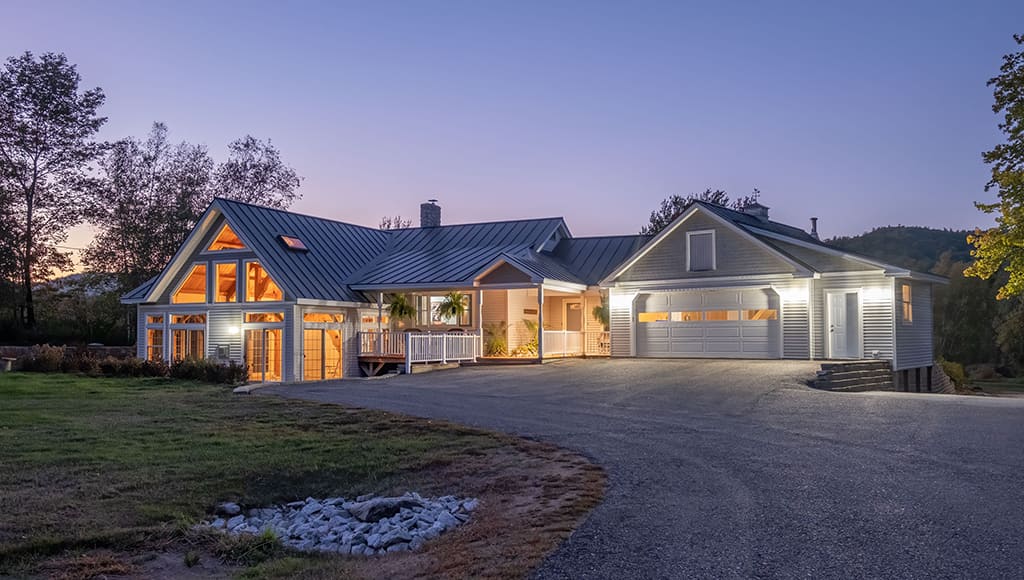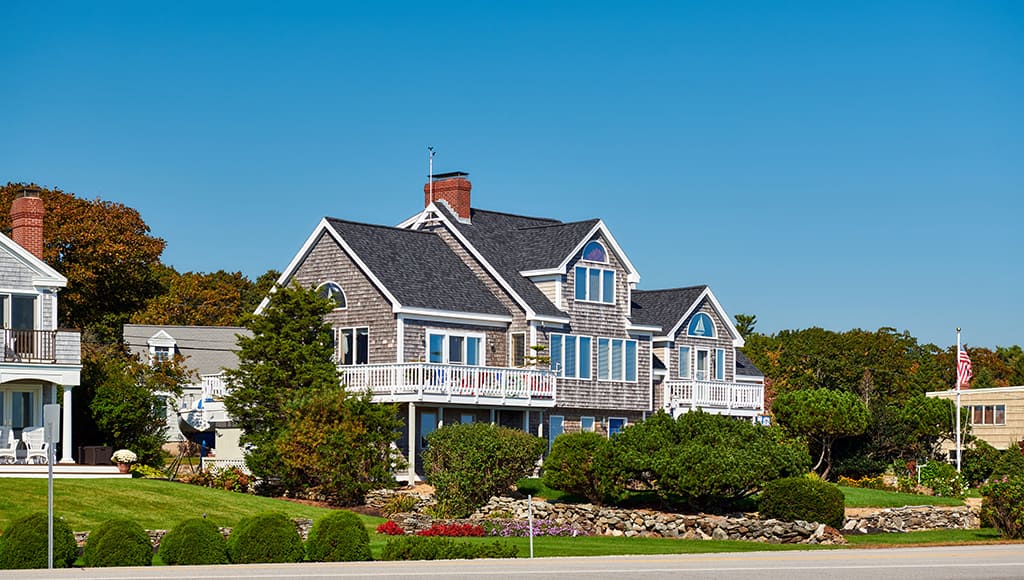Choosing the right siding for your home involves so much more than just picking something that looks good. Your siding needs to match the style of your house and hold up well in your climate without forcing you to put more time and energy into maintenance than you’re ready for.
In this blog, we’ll look at the best siding options for different home types, from traditional to farmhouses and more modern coastal styles. And while you’re thinking about your home’s exterior, don’t forget about the roof—Roof Maxx can extend the life of your shingles by up to 15 years so your home is fully protected.
Taking care of your roof helps prevent leaks and water infiltration from causing damage to your exterior walls and siding.
Roof Maxx helps extend the life of your shingles by re-infusing them with the petrochemical oils they lose over time—so you don’t have to worry about rot and structural damage. Here are some of the other benefits:
Choosing the right siding for your home involves so much more than just picking something that looks good. Your siding needs to match the style of your house and hold up well in your climate without forcing you to put more time and energy into maintenance than you’re ready for.
In this blog, we’ll look at the best siding options for different home types, from traditional to farmhouses and more modern coastal styles. And while you’re thinking about your home’s exterior, don’t forget about the roof—Roof Maxx can extend the life of your shingles by up to 15 years so your home is fully protected.

Traditional homes take inspiration from historic architectural periods, but they typically have enough modern function built-in to be perfectly suitable for modern families. Suburban starter homes, timeless Victorians, Colonials, and Craftsmans pair well with brick, fiber cement, and vinyl siding.
Brick is iconic, extremely durable, and long-lasting. Choose this option if you’re aiming to create that warm and cozy curbside appeal without sacrificing durability in the process.
Here’s what makes it such a reliable choice for traditional homes:
Red, beige, brown, and tan are the most common colors for brick siding. If these aren’t your style, or you want the freedom to paint non-brick exterior surfaces any color, go with neutral shades like white, gray, and black.
Fiber cement gives the look of wood without the usual high maintenance, but it’s also far more durable and weather-resistant. It’s a great option if you want to enjoy all the benefits of modern technology but don’t love the look of vinyl or brick.
Fiber cement outperforms wood so well that it’s the perfect option if you’re still in a century home that’s in need of an upgrade. You’ll get all the protection you want without sacrificing that timeless curb appeal.
Vinyl siding is stylish, versatile, and affordable—that’s a show-stopping combination for families who don’t want to overspend on their siding. It offers a nice balance of features and function, making it more accessible for some homeowners.
The main drawback? It won’t last as long as fiber cement or brick. You can expect to replace your vinyl siding around once every two to four decades.
Related: How Long Vinyl Siding Lasts (& How to Make It Last Longer)

Modern design prioritizes function and efficiency over cozy aesthetics, but they can be just as stylish as the classics—sometimes even more so for the minimalist at heart. Fiber cement and metal siding lean on the same stripped-back philosophy.
Related: Make Your Home Feel More Like Home: Exterior Home Design Trends in 2024
Fiber cement is a top choice for modern homes—but not for the same reasons as we see in traditional home design. This time, it’s all about preserving the contemporary aesthetics.
If your goal is to install siding that looks high-end, but performs incredibly well over the years, this is the siding you should look at first.
Metal siding is ideal for minimalist homes with an industrial aesthetic. It speaks to the same intensely modern, slightly edgier—and expensive—look.
It’s also possible to mix and match metal siding with fiber cement in different areas of your home. This is a good way to add visual interest without sacrificing contemporary aesthetics.

Cottages and bungalows lean into cozy charm even more than traditional homes, often have one-of-a-kind character, and a much more intimate feel because of their small size. Wood and engineered wood are the perfect choice.
Natural wood shingles are the perfect match for cozy, charming little bungalows and cottages. Whether it’s your summer home or you’re moving in permanently, this option will help add texture and warmth.
If sustainability matters to you, you’re in luck! Many wood siding manufacturers now source their wood from responsibly managed forests, so you can feel good about choosing this option.
Engineered wood has the same rustic look and feel as natural wood, but is much more durable and functional. If you’re looking for an option that delivers function and form, go with this option instead.
Engineered wood is also very easy to paint or stain, so you aren’t locked into a single color. Your panels will need to be carefully primed first and sealed with a topcoat at the end.

There was a time in history when farmhouses and ranch-style homes dotted the countryside across the US, but they never really went out of style. Today’s versions have the same historic and rustic appeal with a lot more function—so board and batten and engineered siding are a great fit.
Board and batten siding traces all the way back to early European barn building, but stayed popular over the centuries that followed. Today, you’ll find it on everything from simple historic farmhouses to sweeping alpine chalets.
While it might seem a little ironic, board and batten can actually help farmhouses, ranchers, and other rustic homes feel a little more modern, too. Strong vertical lines and monochrome colors create a contemporary feel without totally stripping away warmth and charm.
For farmhouses, ranchers, and chalets in the northern US, engineered wood is the perfect balance of function and rustic aesthetic. You get the same look as natural wood without most of the drawbacks.
If you’re restoring an older home, engineered wood siding can also help you save money—it’s more affordable than natural wood or stone. That means you’ll be able to spend more of your budget leaning into the features that make your home truly unique and special.

Coastal homes need siding that can withstand high humidity, salt air, and high winds without detracting from their light, breezy aesthetic. Options like brick or stone are too physically and visually heavy, but fiber cement and vinyl are the perfect fit.
Fiber cement siding is a great choice for coastal homes in terms of both form and function. It’s extremely durable, but won’t make them feel cold and impersonal.
The fact that fiber cement lasts so much longer than natural wood, but carries the same general appearance and feel, is also a net positive. You get all the same benefits without the potential drawbacks and high need for maintenance!
If budget or affordability is a concern, vinyl siding can be a great alternative for older coastal homes. It’s practically impervious to moisture, salt spray, and insects when properly maintained.
The main drawback to vinyl in coastal areas is the risk for wind shear in hurricanes or cracking during ice storms. If you live in one of these areas, fiber cement may be the better choice.
| Siding Material | Lifespan | Insulation Value (R-Value) | Cost per Sq. Ft. (Installed) | Durability | Maintenance |
|---|---|---|---|---|---|
| Brick Siding | 100+ years | ~0.4 | $11–$27 | Fire-resistant, pest-proof, extremely durable | Low (Repoint mortar every 25–50 years) |
| Fiber Cement Siding | 50+ years | ~0.37 | $5–$12 | Resistant to fire, moisture, pests, harsh weather | Low (Repainting every 10–15 years) |
| Vinyl Siding | 20–40 years | ~0.5 | $3–$7 | Can crack in extreme cold or warp in heat | Very Low (Occasional washing) |
| Metal Siding | 50+ years | ~0 | $3–$9 | Fireproof, pest-proof, wind and hail resistant | Very Low (Won’t rot or fade easily) |
| Wood Shingles | 20–40 years | ~0.9–1.1 per inch | $6–$15 | Prone to rot, splitting, and insect damage without maintenance | High (Repainting and staining every 5–10 years) |
| Engineered Wood Siding | 30+ years | ~0.5–0.8 | $4–$9 | Resistant to moisture and pests; more durable than wood | Low (Less upkeep than real wood) |
Whether you’re looking for the perfect siding to match your style and aesthetic, or something that’s durable enough to withstand the test of time and Mother Nature’s wrath, there’s a solution for every home. While it’s always best to consult an expert before you choose, the info here will give you a good place to start.
And while you’re taking steps to protect your siding, don’t forget about your roof. Roof Maxx helps extend the life of your roof for up to 15 years by keeping your shingles flexible and water-resistant. Find a dealer near you to get a quote for treating your roof so it can keep protecting your home (and siding) well into the future.
With our five-year, transferable warranty, you’ll enjoy the peace of mind that your roof and entire home are protected.